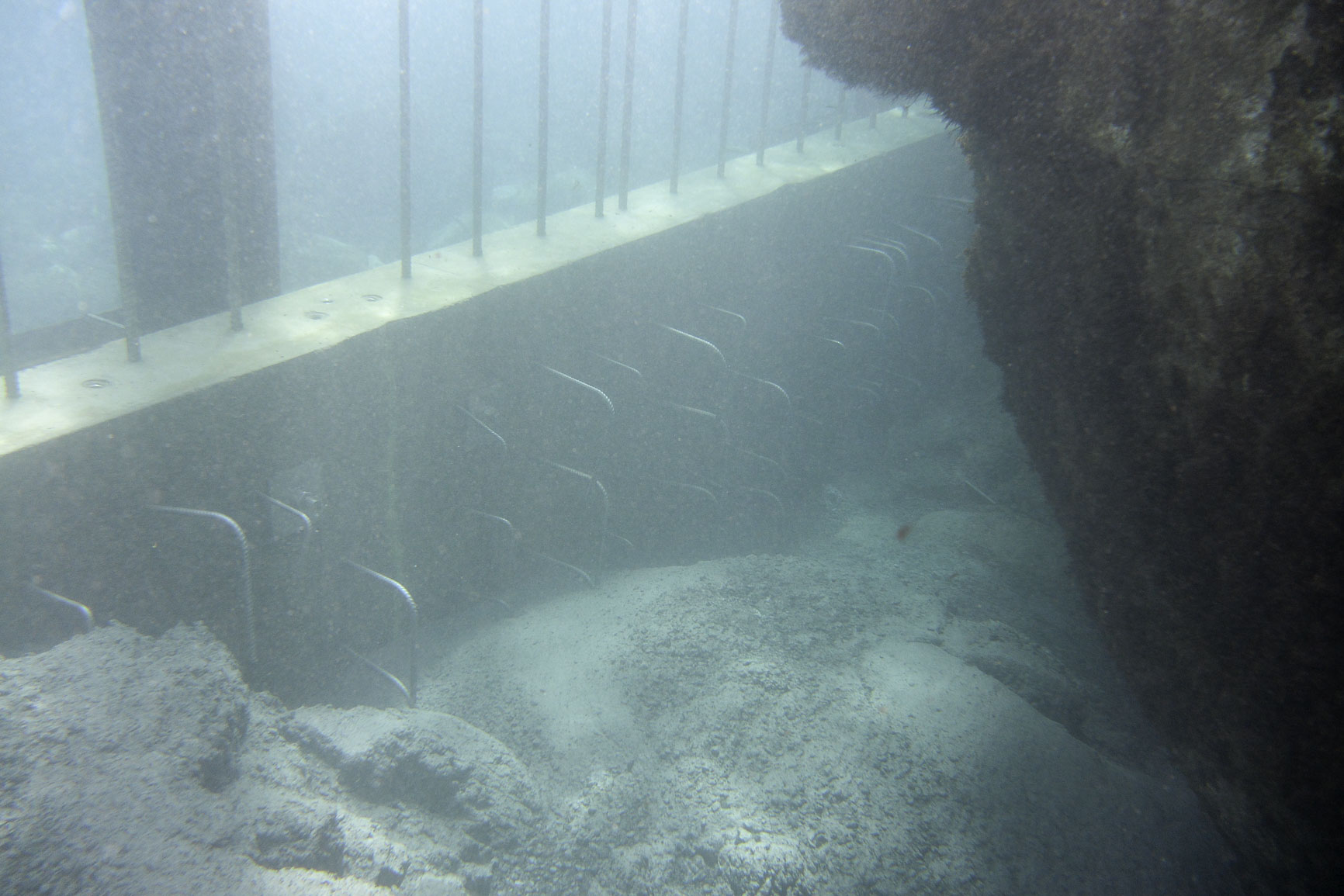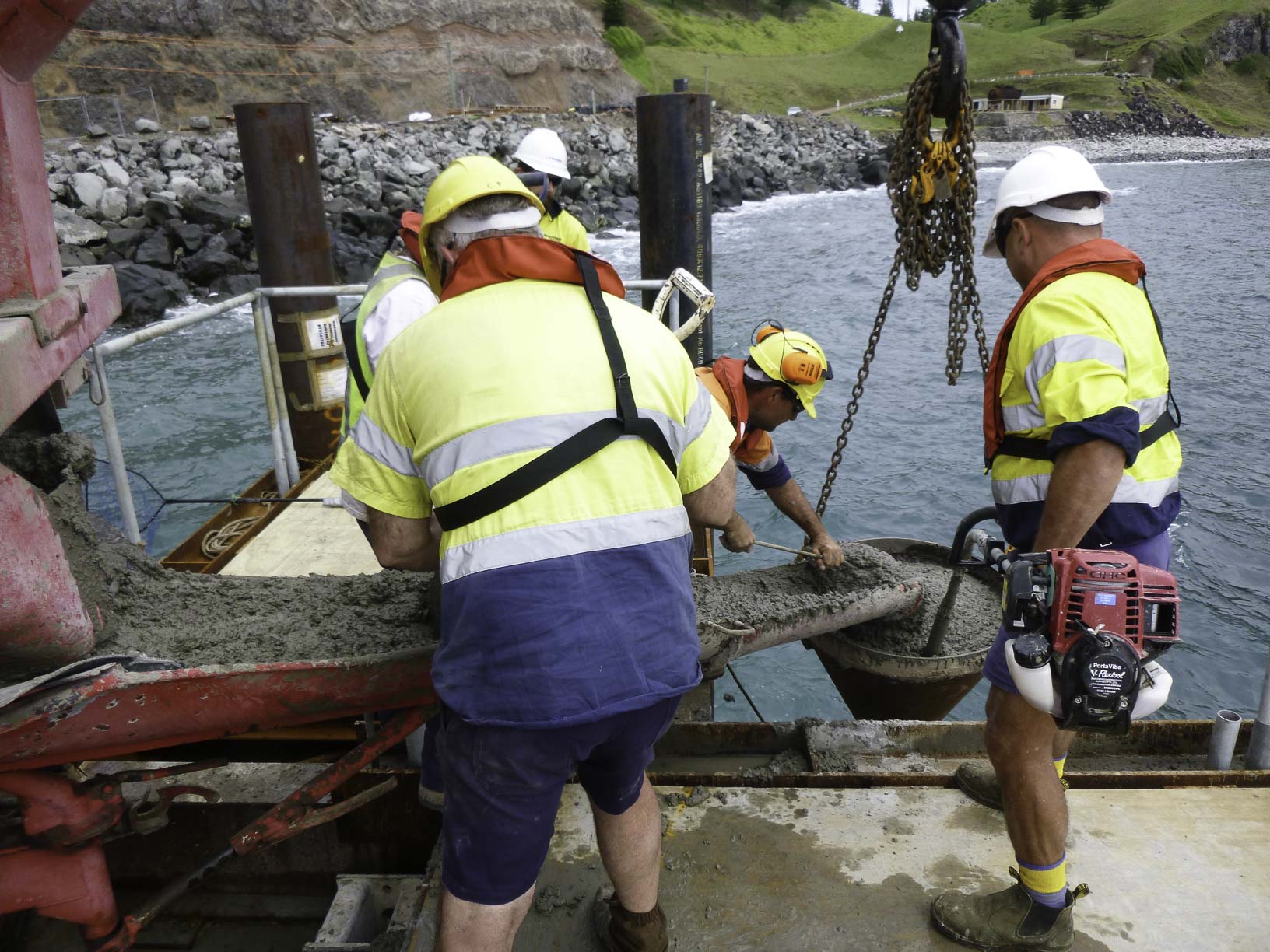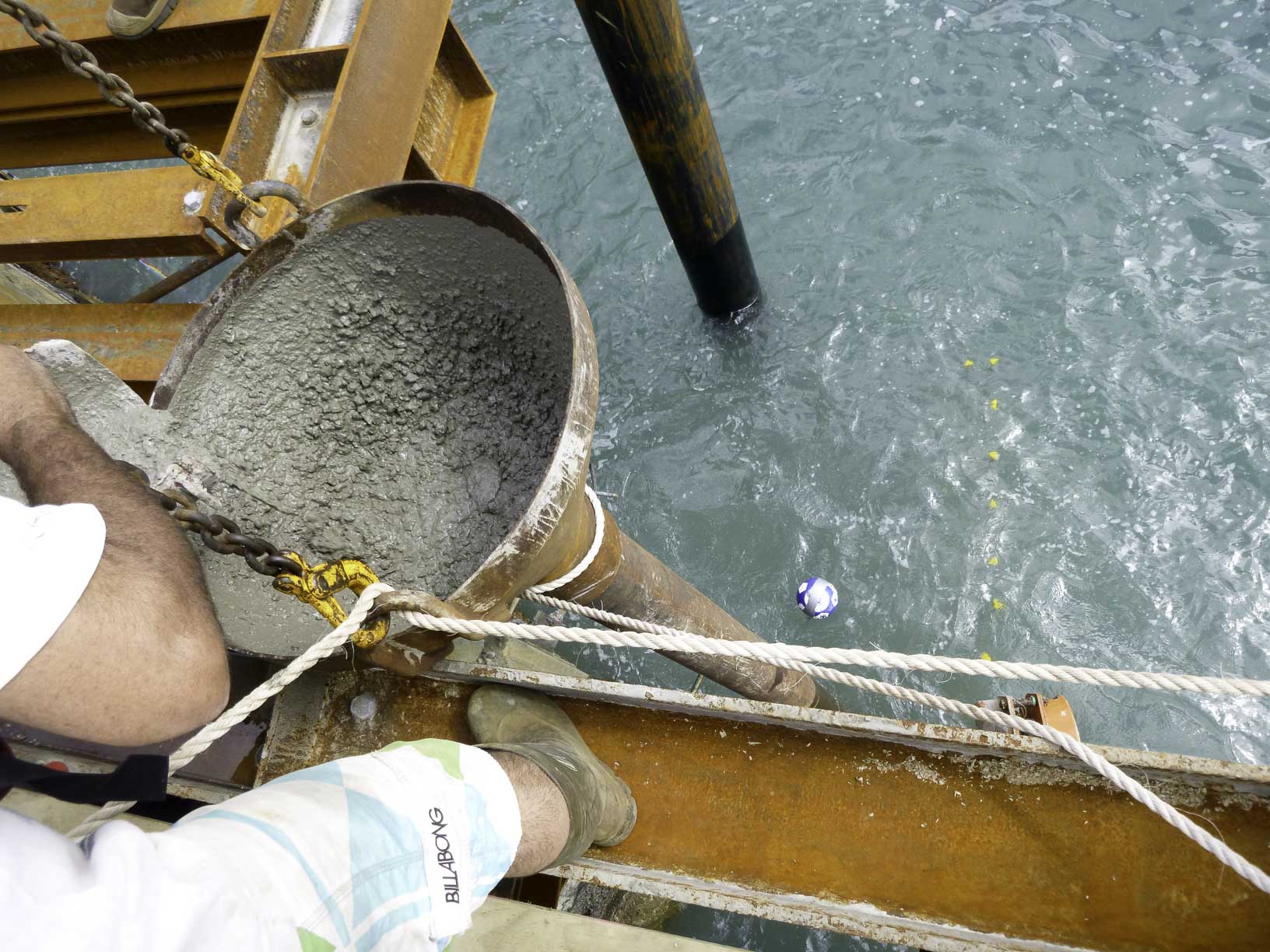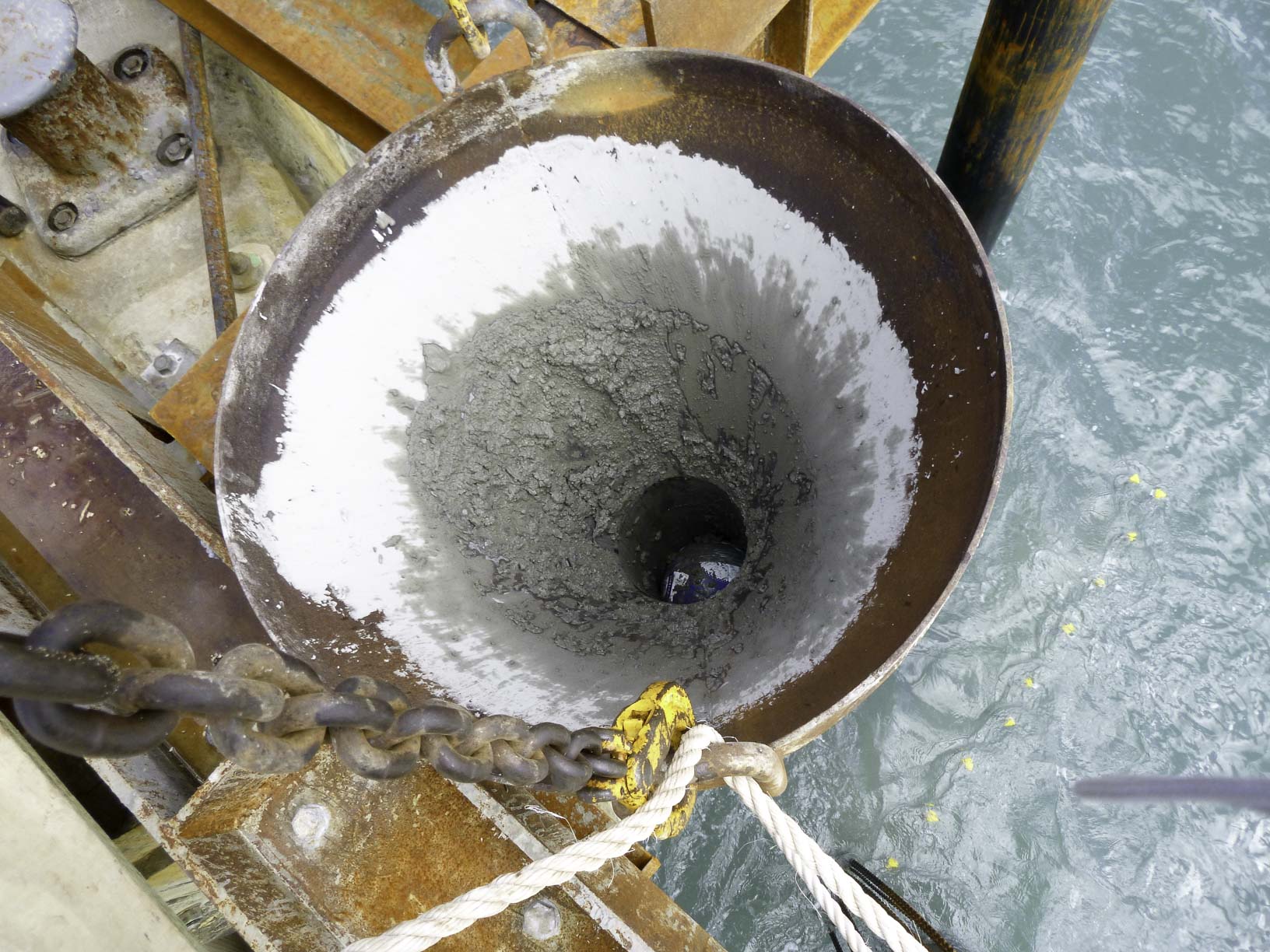The tremie method is a simple, yet effective way of placing concrete underwater. A gravity-fed tremie consists of a rigid pipe and hopper (see photos). The key principle is to keep the end of the tremie pipe submerged within the mound of fresh concrete being placed underwater. The new concrete is always being placed inside the concrete mound. The outside of the mound is therefore the only surface exposed to the washout effects of the surrounding water. The extent of any quality loss is thusly minimised. The end product is typically a series of mounds with a coarse finish (see underwater photo – courtesy of Noel Saenger).
It is necessary for a plug to seal between the concrete and water interface during the initial free-fall of concrete. A soccer ball may be used to this effect, as seen in the photos.
It is critical that the supply rate of concrete is kept up to the hopper such that the hopper remains filled at all times. Otherwise, pockets of air could be introduced within the concrete pour.
The amount of concrete “lost” during the placement process is a function of the energy of the surrounding waters, and stickiness of the concrete. The concrete’s stickiness may be readily increased via addition of manufactured fine aggregates to the mix design.




